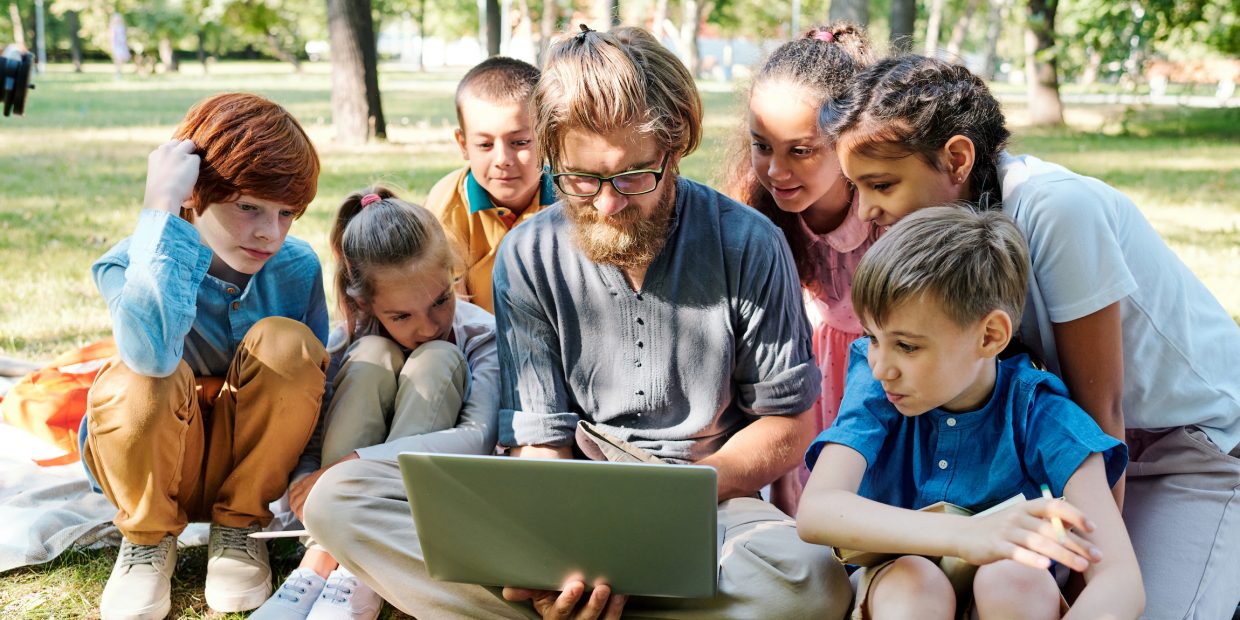Around the world, teachers have had to reinvent themselves more in the past year than they did in the previous two decades. The global pandemic has played a core role in this adjustment, though, thankfully, new technologies have been put at the teacher’s disposal to help them adjust to these fast-changing circumstances.
With great online options, however, comes an overload of choices that a teacher now has to make, and how to impart the traditional curriculum using these new tools might feel more overwhelming than ever. Luckily, FilmDoo Academy is here to help on your search! Our take on the current education landscape can be summed up in three simple tenets:
– We believe a teacher’s time is better spent discussing their topics with their students, and planning a class without having to worry too much about the methods of teaching.
– We believe in the power of video, especially nowadays and with younger students. Learning effectively while having fun and exploring thought-provoking content is our main goal!
– We believe you as a teacher are the best resource the student has to learn from, and it is our job to help you with the “how”.
With this in mind, here are a few tips on how to find the appropriate resources, create your own educational content and modernise your classes, whether you are teaching your students virtually or in a traditional classroom.
5 Key Things to Consider for Educational Content
1. The Goals of Your Lesson
When designing a lesson for the digital age, being clear in the goal for your content is the key starting point of your class prep.
2. Quantity and Depth
Most of our fellow teachers have discovered that covering subjects quickly or overloading students with information is not effective in the long run, so keeping this is mind when planning your strategy is essential.
3. Reliable and Good Quality Resources
When deciding on content, we should be considering the following:
(a) To what extent does the teacher need to choose the content for a lesson and to what extent should students be free to choose the content and resources that suit them?
(b) To what extent does the instructor need to deliver content themselves, such as through a lecture or PowerPoint slides, when user-friendly resources are so freely available elsewhere? What is the added value you are providing by delivering the content yourself?
(c) To what extent do we need to provide criteria or guidelines to students for choosing and using openly accessible resources, and what is the best way to do that?
4. Course Structure
Naturally, the educational content you’ll incorporate into your class ought to fit your curriculum and overall course planning. Within this structure, it’s worth considering how you could incorporate your resources into other parts of your course and different subject areas, making the most out of what you have.
5. Learner Activities
This depends on the subject you are teaching. For topics where memorisation is important, for instance, automated tests such as computer-marked assignments might be the way to go. If that’s what you’re looking for, then multiple choice questions are great way to go about it, and our edtech tool might just be the right fit for you (in which case, sign up today for your free trial!).
How to Find the Right Educational Resources: 3 Important Tips
In our experience working with teachers, this part might be easier said than done. Here are 3 important tips provided by fellow educators:
– To find the appropriate language learning resources, try searching in your target language on the platform of your choosing. If you are teaching French or Spanish, for example, put in your key words in said language on not just YouTube and Vimeo, but also Google, Spotify and any other media libraries at your disposal. The sky is the limit when it comes to places to find good content.
– Aim for content that goes beyond your lesson points: Short films are a great gateway to start a discussion on culture, different opinions and even important moral lessons for your students.
– Don’t disregard non-dialogue videos: They can be very effective for younger students or for learning basic vocabulary if you are teaching a language. You can find amazing animated short films without dialogue on Youtube and Vimeo, and again great quality alters the learning result. If you are a FilmDoo Academy member, we can get you a list of our top shorts, already curated and tagged for easier revision. Get in touch for more info!
DIY: 5 Tips for Creating Your Own Educational Content
– Create Content that is Relevant and up to date.
– If you are recording yourself, be mindful of camera angles, sound quality, your background and other surrounding factors that could enhance or distract from the content of your lesson.
– Tailor the content for your target student – think age, background, interests. We know this can be challenging for a larger group but, more often than not, you can find common find common ground within a single class.
– Be specific and use real-life examples.
– Interactivity is key: Make your lesson as much of a game as possible. FilmDoo Academy can help you with that. Feel free to message us for more info: info@filmdoo.academy
Visit the FilmDoo Academy edtech platform here.
Written by Julio Marmol Corbacho.








